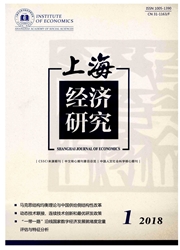

 中文摘要:
中文摘要:
该文以中国2004-2015年期间286个地级及以上城市为样本,运用动态空间面板模型,实证分析产业集聚对地区全要素生产率的影响以及作用途径,实证结果表明:(1)制造业集聚对地区全要素生产率具有显著的负影响,但没有产生拥挤效应;生产性服务业显著提高了地区全要素生产率,且存在拥挤效应;制造业与生产性服务业的共同集聚显著促进了地区全要素生产率的提高。(2)制造业集聚对地区全要素生产率的负影响主要通过抑制技术进步发挥作用;生产性服务业集聚对地区全要素生产率的正影响主要通过提升技术效率实现;制造业与生产性服务业的共同集聚对地区全要素生产率的正影响是通过促进技术进步和提升技术效率两条途径实现的。(3)MAR外部性和Porter外部性抑制了地区全要素生产率的提高,而Jacobs外部性有助于地区全要素生产率的提升。
 英文摘要:
英文摘要:
Taking 286 cities of prefecture level and above in China between 2004 and 2015 as a sample, this paper uses the dynamic spatial panel model to empirically analyze the effect of industrial agglomeration on regional total factor productivity. The results show that, (1) the agglomeration of manufacturing industry has significant negative effects on regional total factor productivity, but does not lead to congestion effect; the agglomeration of producer service industry has significant positive effects on regional total factor productivity, and results in congestion effect. The co-agglomeration of manufacturing and producer service industry significantly contributes to the improvement of regional total factor productivity. (2)the negative effect of manufacturing industry agglomeration on regional total factor productivity functions by inhibiting technological progress; the positive impact of producer service industry agglomeration on regional total factor productivity fulfills through improving technical efficiency; the positive impact of co-agglomeration of manufacturing and producer service industry on regional total factor productivity is achieved by two channels of promoting technological progress and improving technical efficiency. (3) MAR externality and Porter externality inhibits the rise of regional total factor productivity and Jacobs externality is conductive to the rise of regional total factor productivity.
 同期刊论文项目
同期刊论文项目
 同项目期刊论文
同项目期刊论文
 期刊信息
期刊信息
